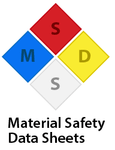A recombinant VSV-vectored vaccine
Recombinant VSV-vectored refers to a type of viral vector vaccine that uses the Vesicular Stomatitis Virus (VSV) as a delivery system for genetic material. VSV is a virus that primarily affects livestock but is not known to cause disease in humans. In recombinant VSV-vectored vaccines, the genetic material of the VSV virus is modified to carry genes from another virus or pathogen, such as a virus that causes a specific disease.
These vaccines work by introducing harmless parts of the target pathogen into the body, triggering an immune response without causing illness. The immune system then learns to recognize and fight off the pathogen if the person is exposed to it in the future.
Recombinant VSV-vectored vaccines have been explored for a variety of diseases, including Ebola, HIV, and respiratory syncytial virus (RSV). They are often studied for their potential to elicit strong and durable immune responses, which could make them valuable tools in the fight against infectious diseases. However, like all vaccines, they undergo rigorous testing to ensure their safety and efficacy before being approved for use in humans.

Concerns about the pandemic potential of the Nipah virus (NiV) have increased. Similar to SARS-CoV-2, NiV is an RNA virus that is transmitted by respiratory droplets. There are currently no NiV vaccines licensed for human use. Although several preventive vaccines have shown promise in protecting animals against lethal NiV disease, most studies have evaluated protection 1 month after vaccination. However, to contain and control outbreaks.
vaccines are needed that can rapidly confer protection in days rather than months. Here, we show that a recombinant vesicular stomatitis virus vector expressing the NiV glycoprotein can completely protect monkeys vaccinated 7 days before NiV challenge and 67% of animals vaccinated 3 days before NiV challenge.
Nipah virus (NiV) is a highly lethal emerging zoonotic disease that, like SARS-CoV-2, can be transmitted via respiratory droplets. Single-shot vaccines that rapidly control NiV outbreaks are needed. To assess the ability of a vaccine to induce fast-acting protection, we immunized African green monkeys with a recombinant vesicular stomatitis virus (VSV) expressing glycoprotein from the Bangladesh strain (NiVBG) of NiV (rVSV-ΔG-NiVBG). . The monkeys were challenged 3 or 7 days later with a lethal dose of NiVB.
All monkeys vaccinated with rVSV-ΔG-NiVBG 7 days before NiVB challenge were protected from lethal disease, while 67% of animals vaccinated 3 days before NiVB challenge survived. Vaccine protection was correlated with transcriptional signatures of natural killer cells and cytotoxic T cells, while lethality was associated with sustained interferon signaling. NiV G-specific antibodies in vaccinated survivors corroborated additional transcriptomic findings, supporting activation of humoral immunity. This study demonstrates that rVSV-based vaccines may have utility in rapidly protecting humans against NiV infection.
Almost 20 years ago, Nipah virus (NiV) emerged and was shown to be a previously unknown paramyxovirus, now classified together with Hendra virus (HeV) and Cedar virus within the genus Henipavirus (1). NiV causes febrile encephalitis and severe respiratory illness in humans with a case fatality rate (CFR) of up to 100% in some outbreaks (2). Pteropid fruit bats have been identified as the reservoir for NiV in nature, although pigs served as an amplifying host during the first NiV outbreak in Malaysia (3). In addition, there are many other mammalian species that are susceptible to NiV infection (4).
NiV is classified as a biosafety level 4 pathogen due to the high mortality rates associated with infection, lack of effective medical countermeasures, and ease of transmission. In addition to causing morbidity and mortality as a naturally acquired infection, NiV is classified as a category C priority pathogen and a selected transboundary agent by several US government agencies (5).
NiV and henipaviral diseases are included in the World Health Organization's Blueprint List of Priority Pathogens and NiV is included in the priority list of the Coalition for Epidemic Preparedness Innovations (5). Due to the global COVID-19 pandemic, there is increased concern about respiratory pathogens. In 2020, the US Centers for Disease Control and Prevention recommended that NiV be added to the list of selected Tier 1 agents (6). In fact, NiV causes a lethal infection in nonhuman primates (NHPs) when delivered by small-particle aerosol (7–9).
Characteristics of NiV that increase its global pandemic potential include the following: humans are susceptible; NiV is capable of person-to-person transmission; it is an RNA virus with the potential to mutate; and if a human-adapted strain were to infect communities in South Asia, high population densities and global interconnectedness would rapidly spread the infection (10).
Outbreaks of NiV occur almost every year in Bangladesh and India. In 2018, 23 cases and 21 deaths from NiV disease were reported in the state of Kerala, India (91% CFR); in 2019, an isolated case was reported in the same region; in 2020, six cases of NiV disease were reported; and most recently, in September 2021, the virus claimed the life of a 12-year-old boy in Kerala (11-13). Genetic analysis has identified at least two NiV strains responsible for outbreaks in different geographic areas (14, 15). The Malaysian strain (NiVM) caused the initial outbreak of NiV from 1998 to 1999 in Malaysia and Singapore,
